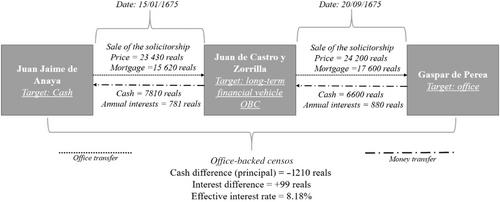现代卡斯蒂利亚早期的安全资产,1543-1714年
IF 1.4
1区 历史学
Q3 ECONOMICS
引用次数: 0
摘要
本文介绍了近代早期卡斯蒂利亚(西班牙)的公共办公室是如何成为投资资产的。此外,文章还证明了办事处符合被视为安全资产的所有条件。特别是,通过将定性资料来源与新颖的手工收集数据库相结合,文章表明办公楼没有受到逆向选择的影响,在流动性较强的二级市场上交易,并在经济困难时期增值。这项研究开创性地揭示了现代早期除钱币和公债之外的避风港资产的存在,同时展示了办事处的私人金融用途。本文章由计算机程序翻译,如有差异,请以英文原文为准。

A safe asset in early modern Castile, 1543–1714
This article shows how public offices in the early modern period became investment assets in Castile (Spain). Moreover, it demonstrates that offices fulfilled all the conditions for being viewed as safe assets. In particular, through the combination of qualitative sources with a novel hand-collected database, it shows that offices did not suffer from adverse selection, were traded in liquid secondary markets, and increased their value during periods of economic distress. This research is a pioneer in revealing the existence in early modern times of a haven asset, other than coins and public debt, and showing at the same time the private financial uses of offices.
求助全文
通过发布文献求助,成功后即可免费获取论文全文。
去求助
来源期刊

Economic History Review
Multiple-
CiteScore
3.60
自引率
27.30%
发文量
84
期刊介绍:
The Economic History Review is published quarterly and each volume contains over 800 pages. It is an invaluable source of information and is available free to members of the Economic History Society. Publishing reviews of books, periodicals and information technology, The Review will keep anyone interested in economic and social history abreast of current developments in the subject. It aims at broad coverage of themes of economic and social change, including the intellectual, political and cultural implications of these changes.
 求助内容:
求助内容: 应助结果提醒方式:
应助结果提醒方式:


